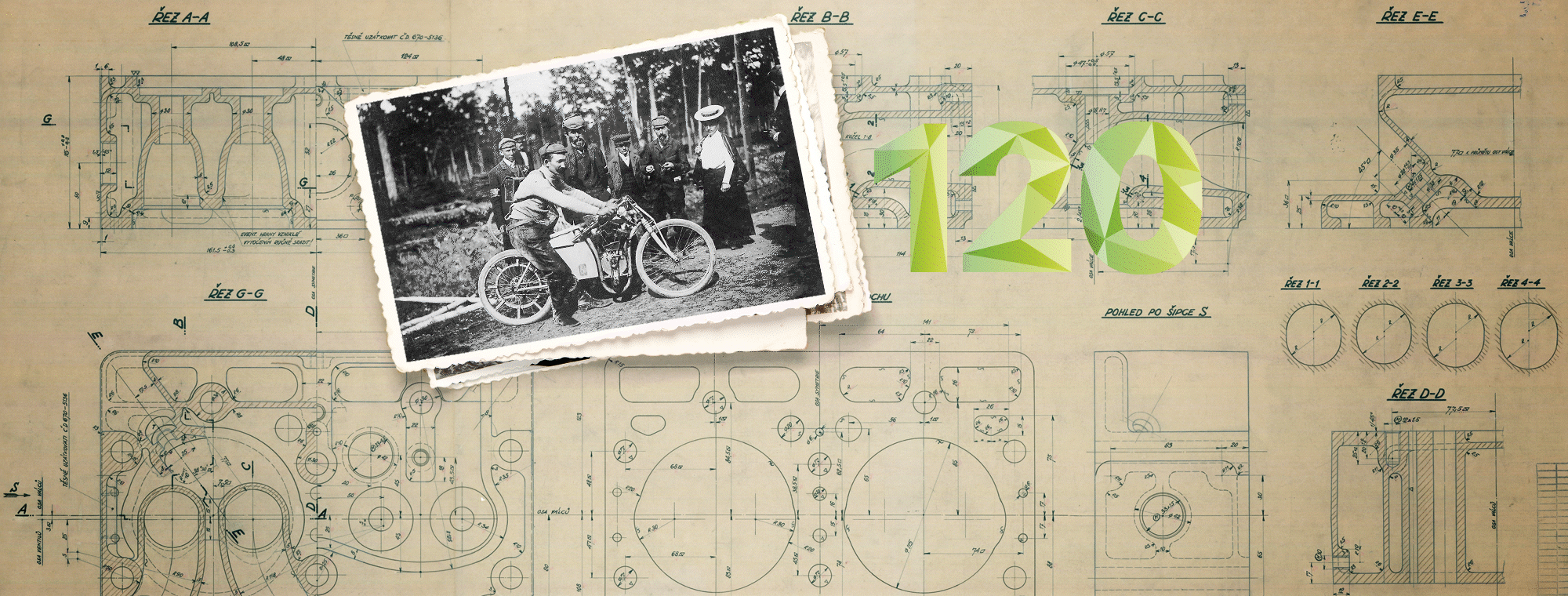The Czechoslovak Grand Prix in September 1949 was to be the last international automobile race in the then Communist country for a long time. The big stars of the Grand Prix on the Masaryk Circuit were later involved in founding Formula 1. At the last race, enthusiasm made up for the lack of financial resources, materials and political will. Under the most modest conditions, single-seater racing cars were built that met the specifications of international Formula racing.
The first Formula 3 races took place at the end of the 1940s. In terms of engines, affordable 500 cm3 single-cylinder motorbike engines were used, which subsequently became widely adopted. In 1951, the series was renamed ‘International F3’. However, by the end of the 1950s, the more modern Formula Junior with series-produced four-cylinder engines under 1,100 cm3 displacement had debuted in Italy. This finally evolved into the classic Formula 3, with cars with displacements of up to 1,000 cm3 on 1 January 1964.
ŠKODA’s monoposto project was given the designation Š 992 in Mladá Boleslav – a reference to its technical similarity to the Š 990 type, which was ready for series production as the newly designed ŠKODA 1000 MB model in spring 1964. The first Š 992 single seater was completed in February 1964. It had a tubular steel trellis frame and independent suspension, with trapezoidal half-axles at the front and five-link suspension at the rear. An advanced solution – even by international standards – was to mount coil springs and shock absorbers on both axles inside the body, which had a positive effect on the monoposto’s aerodynamics.
The adjustable shock absorbers made it possible to vary the car’s ground clearance. Its 13-inch alloy wheels with Dunlop tyres were braked by four disc brakes from the British manufacturer Girling. A ŠKODA in-line four-cylinder engine with OHV valve control and a triple-bearing crankshaft was fitted longitudinally in front of the rear axle. This drivetrain was produced with numerous modifications until 2003 and was last used in the first-generation ŠKODA FABIA.
In the F3 monoposto, the engine had a displacement of 999 cm3 with a shorter stroke and larger borehole. Starting from the vehicle’s vertical axis, it was inclined 12˚ to the left and the clutch was flanged to the rear end.
Between the clutch and the gearbox was the so-called ‘intermediate gear ratio’, which allowed the centre of gravity of the engine to be lowered and thus the overall gear ratio to be adapted to the characteristics of each racetrack. The differential gear had a transmission ratio of 4.44 and was the same as that used in series production. Water and oil coolers were located at the front of the car in front of the driver’s feet. Next to him on both sides were the fuel tanks that had a total capacity of 30 litres. The slim bodywork was made up of several parts and was removable; it was developed in the wind tunnel and initially made of aluminium, being replaced shortly afterwards by fibreglass-reinforced plastic. Space in the cockpit was at a premium – hence the small steering wheel with a diameter of only 300 mm. The unladen weight of the ŠKODA F3 was just under 420 kilograms, with the front axle accounting for 41.5% and the rear, including the engine, for 58.5%.
The one-litre engine originally delivered 53 kW (72 hp) at 7,250 rpm. However, a gradual increase in compression and further optimisations had boosted its output to 66 kW (90 hp) at 8,000 rpm by the 1966 season, while at the same time reducing the car’s overall weight by 15 kg. At the end of 1964, the ŠKODA F3 reached a top speed of 188 km/h during test drives at the airfield in Hoškovice, yet just two years later it hit the 200 km/h mark.
From the very beginning, the ŠKODA F3 was among the front runners in all its races. At that time, the competitions were still being staged on demanding circuits that had not been artificially constructed; they were also held on inner-city courses with cobblestones and sunken manhole covers. For example, the traditional ‘Mezi pavilony’ race in the city of Brno was held on an improvised track between the pavilions of the exhibition grounds. In 1966, Václav (Sen.) and Jaroslav Bobek took the first two places there with their ŠKODA racers. Jaroslav Bobek was crowned Czechoslovak Formula 3 champion in the same year, and two years later his team-mate Miroslav Fousek triumphed in the championship for Communist countries.
With these victories, the successful career of the visually and technically impressive ŠKODA F3 monopostos slowly came to an end. At the end of the 1960s, the cars increasingly came up against competition from Western European countries, such as the Brabham and Tecno racing cars, in international races. In domestic races, primarily Lotus Cosworth cars prevailed, and behind their wheels were well-known drivers such as Vladimír Hubáček and Vladislav Ondřejík for the Dukla Prague team. Nevertheless, the ŠKODA single seaters performed admirably in the often unequal battles and have rightly earned a prominent place in the history of Czechoslovakian motorsport. The fate of the monopostos from Mladá Boleslav was sealed with the change to the Formula 3 regulations in 1971, which stipulated engines with a capacity of 1.6 litres. As a result, the ŠKODA F3 cars would only serve to supply technology to ŠKODA’s new Formula models.
The ŠKODA F3 of Václav Bobek Sen. remained in the possession of AZNP and is now part of the ŠKODA Museum collection. Miroslav Fousek’s car was donated to the National Technical Museum in Prague in 1971, and Jaroslav Bobek’s single-seater was converted by Václav Král into the two-seater Spider Baghira in the mid-1970s. The working prototype that started the whole adventure was dismantled after the 1965 season and is now in a private collection waiting for its renovation to be completed.



























